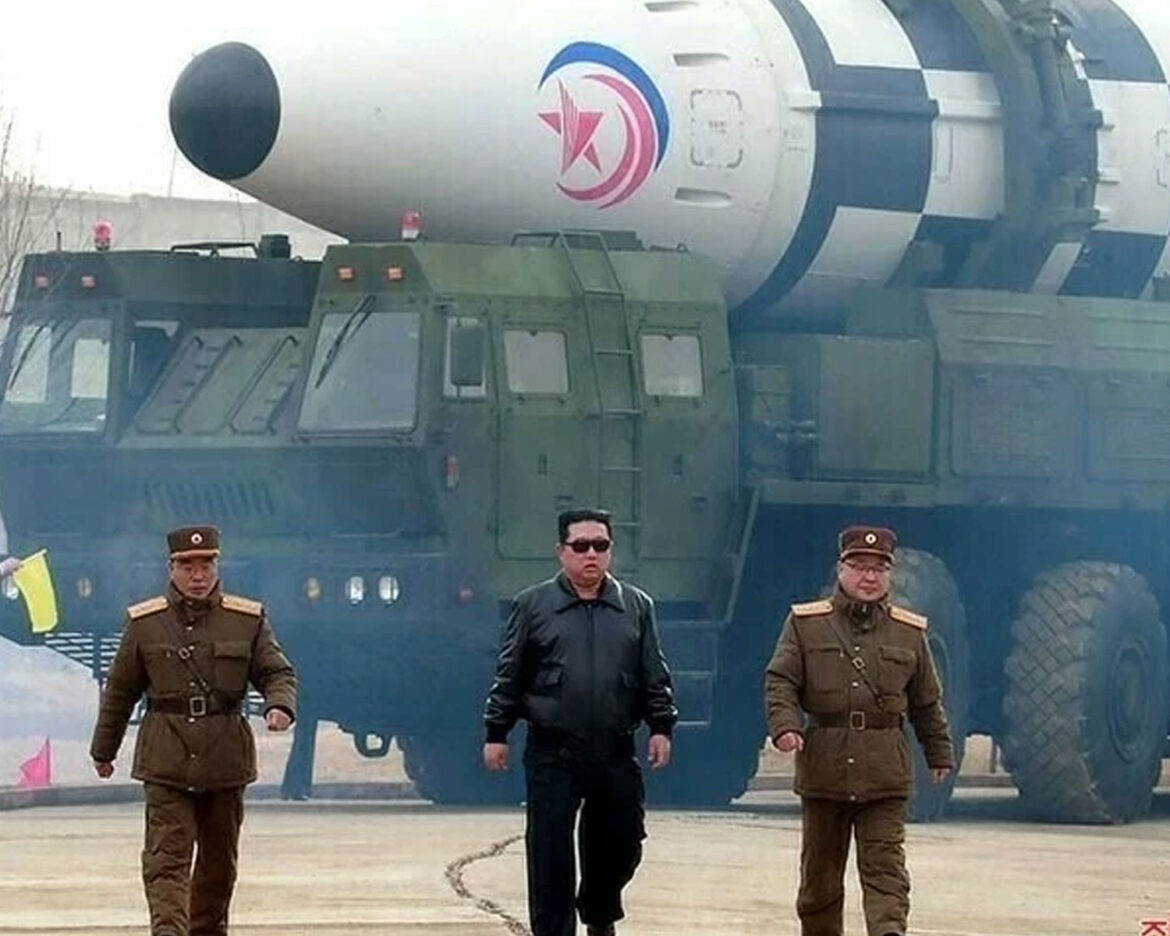In a provocative move, North Korea announced on Friday that it had conducted a test of its “underwater nuclear weapon system” in response to joint naval exercises involving the United States, South Korea, and Japan. The drills, which included the presence of a US nuclear-powered aircraft carrier, were deemed by North Korea as a serious threat to its security.

On March 25, a photograph unveiled by North Korea’s official Korean Central News Agency (KCNA) captures North Korean leader Kim Jong Un (center) in close proximity to what state media describes as the Hwasongpho-17, a recently developed intercontinental ballistic missile (ICBM) from North Korea’s strategic forces. The image was taken just before the undisclosed location’s test launch.
The statement from North Korea’s defense ministry, carried by state news agency KCNA, identified the tested system as the “Haeil-5-23,” currently under development. The exact date of the test was not disclosed. Pyongyang had previously claimed tests of an underwater nuclear attack drone, a different version of the Haeil, with assertions that it could unleash a “radioactive tsunami.” Skepticism surrounds the existence of such a weapon, with analysts questioning North Korea’s capabilities.
Earlier in the week, the US, South Korea, and Japan conducted joint naval drills off southern Jeju Island in response to North Korea’s hypersonic missile launch. The drills involved nine warships, including the USS Carl Vinson aircraft carrier. North Korea condemned the exercises, stating that they destabilized the regional situation and seriously threatened its security.
North Korea’s defense ministry spokesman emphasized that the recent underwater nuclear weapon test further strengthened the country’s “underwater nuke-based countering posture” and would deter hostile military maneuvers by the US and its allies.
Tensions between North and South Korea have escalated in recent months, marked by the deterioration of key tension-reducing agreements, increased frontier security, and live-fire drills along the border. North Korean leader Kim Jong Un declared South Korea as the “principal enemy” and threatened war over even minor territorial infringements.
Analysts, including Hong Min of the Korea Institute for National Unification, interpret North Korea’s announcement as a signal of deploying Haeil drones to its navy fleets. However, opinions on the actual capabilities of North Korea’s underwater nuclear weapons system remain divided, with some experts suggesting it is still in the developmental stage and not yet a significant threat.
As Pyongyang continues to assert its military strength, concerns grow over the potential for further escalations and the impact on regional stability.



